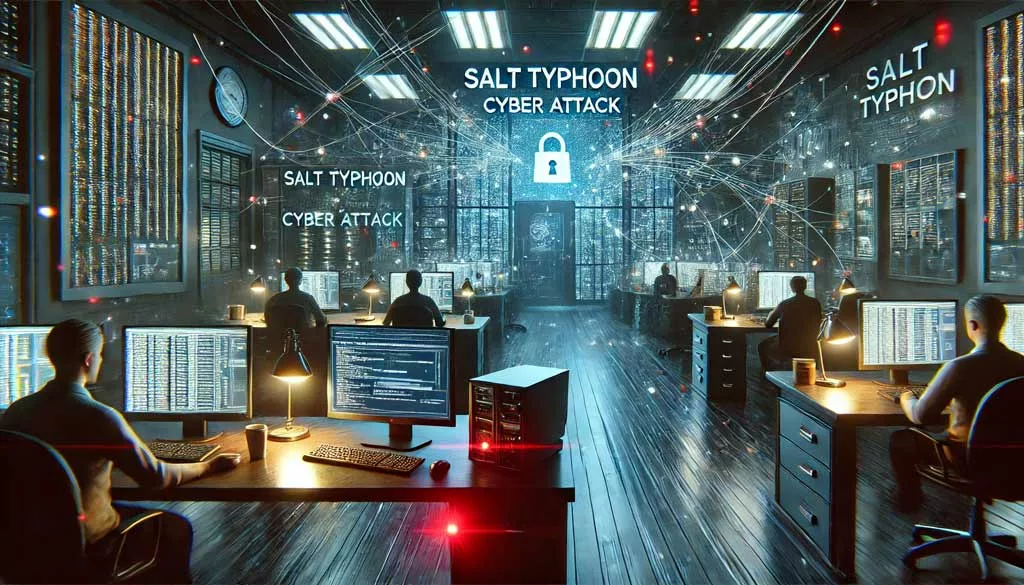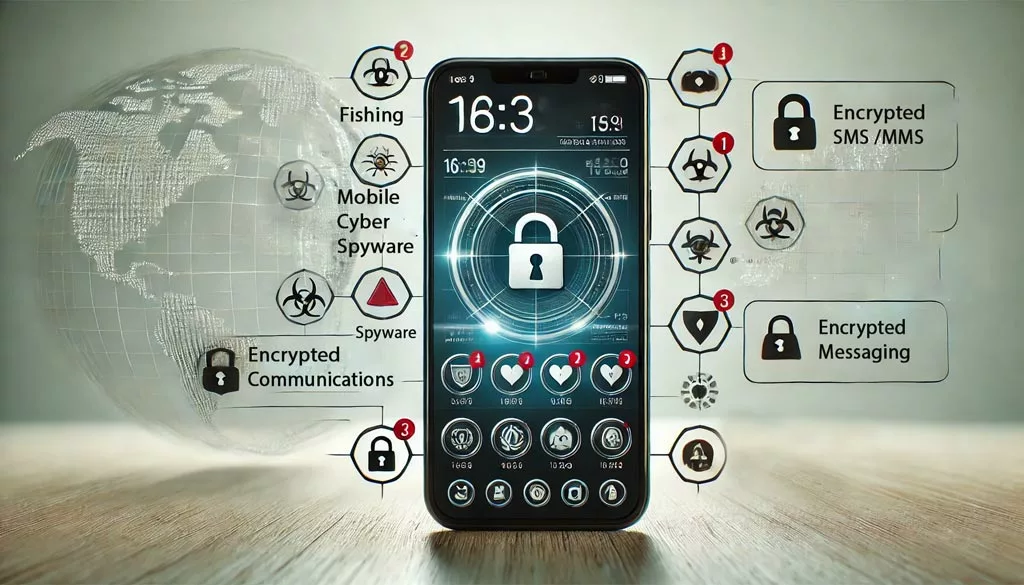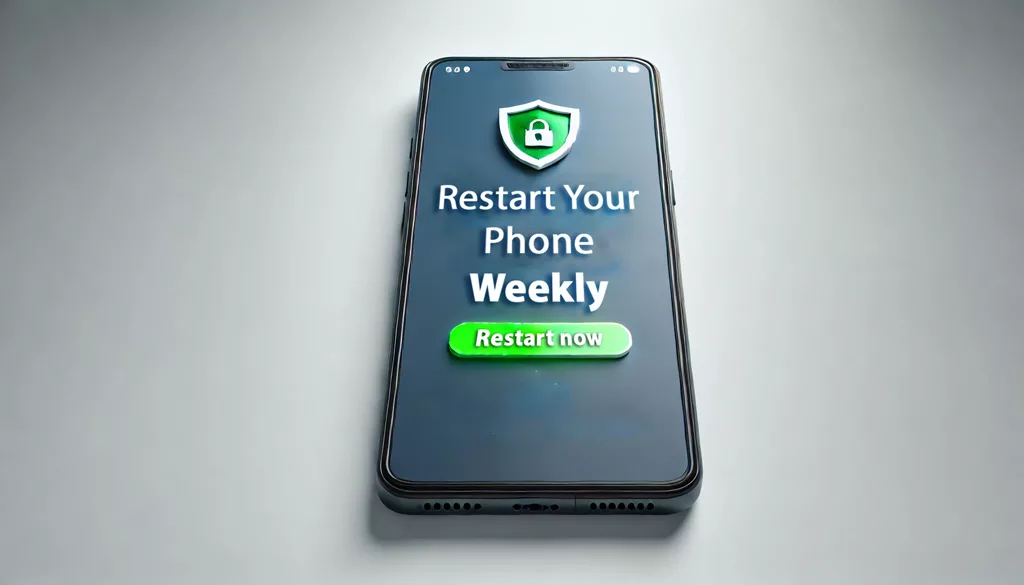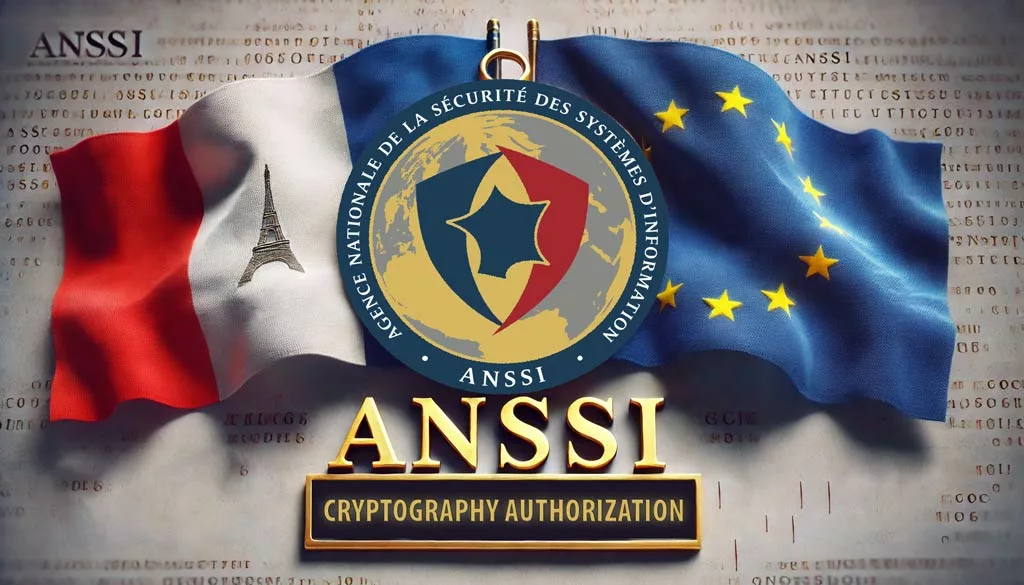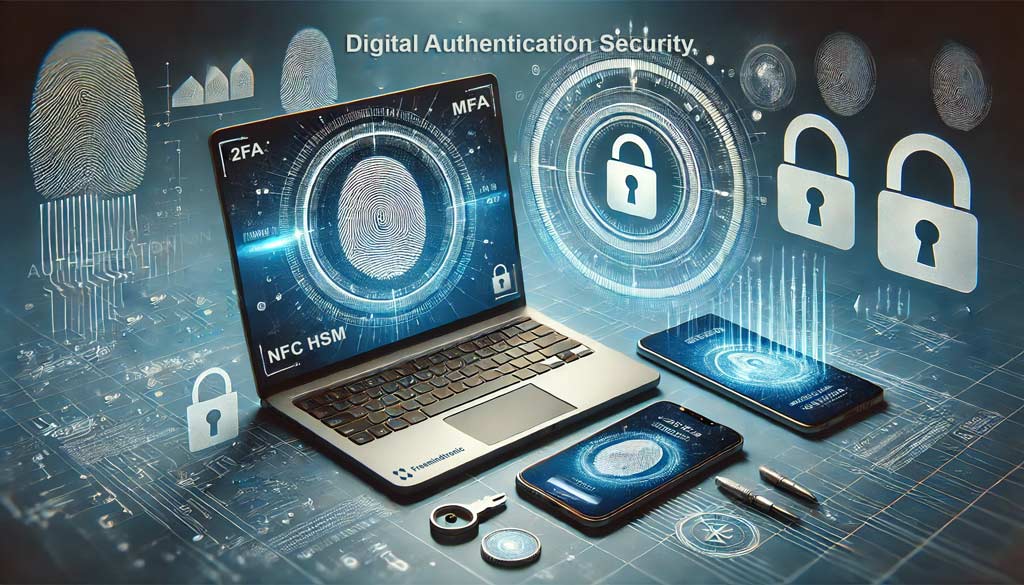Understanding Salt Typhoon and the Cyber Threats Targeting Government Agencies
Salt Typhoon, a state-sponsored cyber espionage operation, targets government agencies with advanced phishing, spyware, and zero-day vulnerabilities. Discover how government agencies can combat these threats with robust encryption solutions like DataShielder NFC HSM.
Salt Typhoon – The Cyber Threat Targeting Government Agencies
This cyber campaign represents a new wave of cyber espionage, allegedly carried out by state-sponsored hackers. This complex operation was initially detected by cybersecurity researchers, who noticed unusual patterns of intrusion across various governmental networks. Salt Typhoon’s origins appear tied to advanced hacking groups, and initial investigations reveal potential links to Chinese state-backed cyber teams. But what exactly does Salt Typhoon entail, and how did it come to light?
What is Salt Typhoon? A Rising Cybersecurity Threat
Salt Typhoon poses a serious cyber threat, with advanced espionage tactics aimed directly at government institutions. This operation, linked to state-sponsored actors, has raised significant concerns within U.S. agencies. Recently, officials warned employees to limit mobile phone use due to potential cyber vulnerabilities associated with this attack. For more on this advisory, you can refer to the original Wall Street Journal report, which outlines the severity and implications of Salt Typhoon.
Growing Threats to Government Cybersecurity
To understand the scope of Salt Typhoon, it’s crucial to examine what makes it a significant cybersecurity risk. Salt Typhoon represents an organized campaign specifically engineered to penetrate mobile and computer systems within government networks. This threat has been carefully crafted to bypass standard security measures, allowing it to access highly sensitive information.
Discovery and Origins of Salt Typhoon
Salt Typhoon was uncovered when analysts noticed an unusual surge in phishing attacks targeting high-ranking officials. These attacks targeted high-ranking officials within government agencies, raising red flags across the cybersecurity community. Working together, researchers from top cybersecurity firms and intelligence agencies traced these attacks back to a group suspected to have links with Chinese state operations. The subsequent analysis revealed that Salt Typhoon used a complex mix of tactics—such as zero-day exploits and spyware—to infiltrate systems without detection. But how exactly does Salt Typhoon operate, and what methods does it employ?
How This Threat Operates
Salt Typhoon operates with a sophisticated toolkit of methods that enable it to breach government security networks effectively. Here are some of the core techniques behind this attack:
- Advanced Phishing and Smishing: By sending deceptive links through email and SMS, Attackers use realistic, spyware-laden messages to deceive officials into clicking harmful links.
- Spyware and Malware Injection: After gaining access, The attack covertly monitors calls, messages, and even device locations, using sophisticated spyware. It even hijacks cameras and microphones to provide real-time surveillance.
- Exploitation of Zero-Day Vulnerabilities: Salt Typhoon leverages unknown system vulnerabilities to access networks secretly, making it nearly impossible for traditional security protocols to detect.
- IMSI Catchers and Network Interception: Using IMSI catchers, Salt Typhoon intercepts mobile communications, allowing attackers to eavesdrop and capture critical data.
Each of these methods showcases the advanced nature of Salt Typhoon, but why are government agencies the primary targets?
Why Government Agencies Are Prime Targets
The focus on government agencies underscores the sensitive and strategic nature of the data they hold. Attackers aim to capture:
- Confidential Credentials: Stolen login information provides attackers with access to restricted databases and sensitive operational details.
- Real-Time Location Data: Tracking officials’ movements gives attackers critical insights into strategic activities and plans.
- Sensitive Communication Channels: Communications between government officials often contain details on operations and intelligence, making unauthorized access a serious national security risk.
Given the sensitivity of this information, the repercussions of Salt Typhoon on national security are severe. But what could these repercussions look like in practice?
National Security Implications of Salt Typhoon
This cyber campaign doesn’t merely threaten privacy; it impacts national security at multiple levels. Here’s a look at the potential consequences:
Potential Repercussions of a Security Breach
- Exposure of Classified Information: A breach within a government agency could lead to sensitive data leaks, risking public safety and affecting diplomatic relations.
- Interruption of Critical Operations: If attackers gain control over secure communication channels, they could disrupt essential operations, impacting intelligence and diplomacy.
- Loss of Public Confidence: Breaches like Salt Typhoon can erode public trust in the government’s ability to protect information, creating long-term reputational damage.
Recognizing these threats, government agencies must adopt robust defense strategies to safeguard against Salt Typhoon. But what solutions are most effective?
Recommended Defense Strategies Against Salt Typhoon
Countering Salt Typhoon demands advanced cybersecurity measures designed to protect against sophisticated threats. Below are some key strategies for enhancing security within government agencies.
DataShielder NFC HSM – A Key Solution for Secure Communications
One of the most effective solutions is DataShielder NFC HSM, which provides robust encryption for SMS, MMS, RCS, emails, and chat without the need for servers or databases. By utilizing DataShielder NFC HSM Master for advanced encryption or DataShielder NFC HSM Lite for essential encryption, agencies can ensure their data remains secure and anonymous at the source.
For organizations focusing on secure authentication to prevent identity theft, DataShielder NFC HSM Auth offers a reliable solution against AI-assisted identity fraud in workplace settings. Additionally, DataShielder NFC HSM M-Auth is ideal for protecting identity in mobile environments, even when users are on unsecured networks.
For desktop or laptop applications, DataShielder PGP HSM enhances security with strong encryption and secure data transmission when paired with a DataShielder NFC HSM device.
While defensive measures are essential, the global implications of Salt Typhoon also require international collaboration and diplomacy.
Additional Security Measures for Government Agencies
In addition to solutions like DataShielder, agencies can implement further protective practices:
- Limiting Public Wireless Connections: The NSA recommends disabling Wi-Fi, Bluetooth, and GPS services when they are not necessary, to reduce interception risks.
- Regular Security Updates: With Salt Typhoon exploiting zero-day vulnerabilities, frequent updates help close known gaps and protect against attacks.
- Implementing VPNs and Multi-Factor Authentication: Additional layers of security protect devices connected to government networks.
- Cybersecurity Training Programs: Training employees to recognize phishing and smishing attacks reduces the likelihood of human error leading to a breach.
Enhanced Security for Sovereign Communications: DataShielder NFC HSM Defense
For highly confidential communications, the DataShielder NFC HSM Defense version provides additional layers of protection. It enables secure phone calls where contacts are stored solely within the NFC HSM, ensuring that call logs, SMS, MMS, and RCS are automatically removed from the device after each call. This level of security is essential for agencies handling classified information, as it leaves no digital trace.
The Role of Cyberdiplomacy in Countering State-Sponsored Cyber Threats
The attribution of this campaign to a specific nation raises the stakes in global cybersecurity. State-sponsored cyberattacks not only strain diplomatic relations but also create broader geopolitical challenges. As a result, governments must explore cyberdiplomacy to establish boundaries and maintain stability in international relations.
- Cyberdiplomacy’s Role: As cyberattacks like Salt Typhoon increase, governments must negotiate and set international norms to prevent further escalation. Diplomacy plays a vital role in setting boundaries for state-sponsored cyber activities and in addressing breaches collectively.
- Potential Retaliatory Actions: In response to Salt Typhoon and similar attacks, the U.S. may consider diplomatic actions, sanctions, or enhanced security protocols with allied nations. Strengthening cybersecurity collaboration between nations can create a united front against state-backed threats.
To understand the full impact of Salt Typhoon, it’s helpful to compare it to other notorious spyware, such as Pegasus and Predator.
Salt Typhoon Compared to Other Spyware Threats
The techniques used in this cyber operation mirror those of other infamous spyware programs, including Pegasus and Predator. These tools have been used globally for high-stakes espionage and provide insights into the dangers of state-sponsored cyber threats.
Pegasus and Predator – Similar Threats and Their Impacts
- Pegasus: This powerful spyware infiltrates devices to monitor calls, messages, and even activate cameras for surveillance. Pegasus has compromised numerous high-profile targets. Learn more about Pegasus’s reach here.
- Predator: Similar to Pegasus, Predator has been linked to espionage campaigns threatening both government and private sectors. Predator’s methods and risks are detailed in our guide here.
These examples underscore the need for advanced encryption solutions like DataShielder NFC HSM, which offers anonymity and security essential for protecting government communications from surveillance threats.
Building a Proactive Defense Against Salt Typhoon
Salt Typhoon underscores the critical importance of a robust cybersecurity framework. By adopting solutions like DataShielder NFC HSM and implementing proactive policies, government agencies can not only protect their data but also establish a new standard for digital security. In today’s evolving threat landscape, maintaining a proactive defense is essential for secure communications and national security.
For a deeper look into mobile cyber threats and how government agencies can enhance their security practices, explore our full guide on Mobile Cyber Threats in Government Security.


